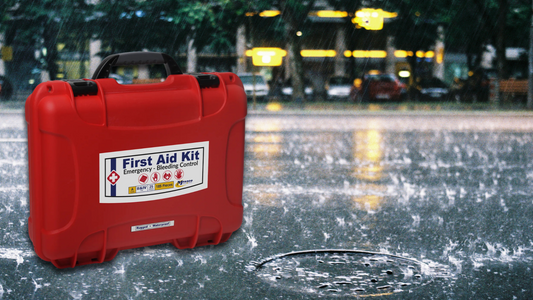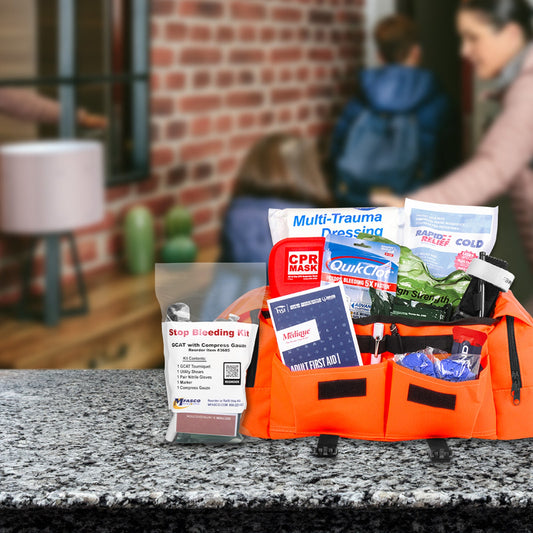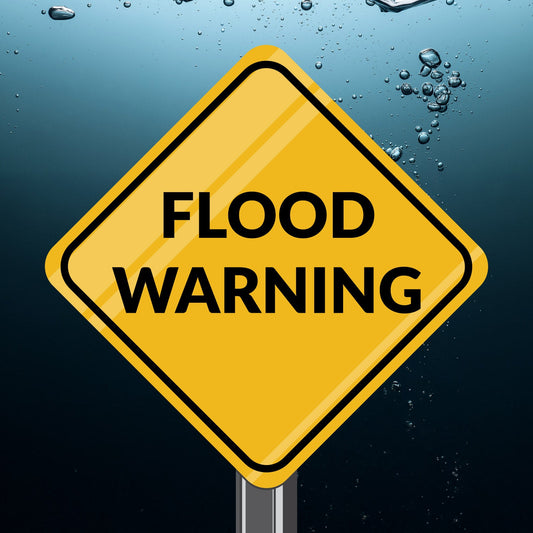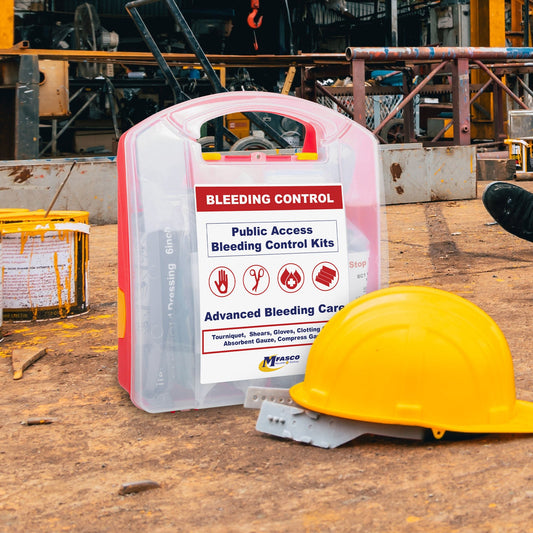The Critical Role of Bleeding Control Supplies in Emergency Kits

Emergency Preparedness: Bleeding Control Supplies
Emergency preparedness is a cornerstone of safety, both in the home and workplace. While most people understand the importance of having an emergency kit stocked with essentials like bandages, antiseptics, and basic survival tools, there is a critical component often overlooked—bleeding control supplies. In situations where severe bleeding occurs, the presence of the right tools can be the difference between life and death.
Why Bleeding Control Supplies Are Vital
Severe bleeding can lead to death within minutes if not properly addressed. This is especially true in scenarios where professional medical help is delayed, such as in natural disasters, accidents, or mass casualty events. Emergency kits that lack bleeding control supplies leave individuals vulnerable to the life-threatening consequences of uncontrolled bleeding.
Risks of Uncontrolled Bleeding
- Rapid Blood Loss and Hypovolemic Shock: Uncontrolled bleeding can quickly result in hypovolemic shock, a condition where the body loses too much blood, leading to organ failure and death within minutes.
- Time Sensitivity: In emergency situations, every second counts. Immediate action is crucial, and having the right bleeding control tools allows for a swift and effective response.
- Psychological Impact: The absence of proper tools can cause panic and helplessness among bystanders, leading to inaction or ineffective attempts to control bleeding.
Key Bleeding Control Supplies to Include
To ensure comprehensive preparedness, it is essential to include the following bleeding control supplies in your emergency kit:
- Tourniquets: These are indispensable for stopping severe bleeding from limbs. Modern tourniquets are designed for quick application, even under stress.
- Hemostatic Dressings: These gauze pads are treated with clotting agents that rapidly stop bleeding, particularly effective when direct pressure alone isn’t sufficient.
- Compression Bandages: These bandages apply sustained pressure to stabilize wounds and reduce bleeding, making them a versatile addition to any kit.
- Trauma Shears: These are designed to cut through clothing and other materials swiftly, allowing responders to access and treat wounds without delay.
Safety Risks of Inadequate Emergency Kits
Emergency kits that do not include bleeding control supplies pose significant safety risks:
- Inadequate Response to Severe Injuries: Without the proper tools, responders may struggle to effectively control life-threatening bleeding.
- Increased Exposure to Blood-Borne Pathogens: Improvised methods can elevate the risk of exposure to blood for both victims and responders.
- Delayed Treatment: Searching for makeshift bleeding control tools wastes precious time in critical situations.
- Psychological Distress: The lack of proper tools can cause bystanders to feel helpless, leading to panic or inaction.
Regulatory Guidelines: OSHA and ANSI
The importance of bleeding control supplies in emergency preparedness is underscored by guidelines from the Occupational Safety and Health Administration (OSHA) and the American National Standards Institute (ANSI):
- OSHA: Requires employers to have adequate first aid supplies readily available, which should include tools for bleeding control.
- ANSI Z308.1-2021: Standards recommend the inclusion of hemostatic dressings and a tourniquet in workplace first aid kits.
These guidelines highlight the necessity of being equipped not just for minor injuries but also for severe bleeding, which can occur in a variety of settings.
Best Practices for Different Settings
Different environments have unique needs when it comes to emergency preparedness. Here’s how to effectively incorporate bleeding control supplies in various settings:
-
Workplaces:
- Position bleeding control supplies in easily accessible locations.
- Train employees in basic bleeding control techniques.
- Regularly inspect and restock supplies to ensure readiness.
-
Schools:
- Place bleeding control kits alongside Automated External Defibrillators (AEDs).
- Include bleeding control training in staff development programs.
- Consider age-appropriate bleeding control training for students.
-
Retail Spaces:
- Store bleeding control supplies with other emergency equipment.
- Train staff on how to use these supplies effectively.
- Ensure clear signage indicates the location of emergency supplies.
-
Public Institutions:
- Install bleeding control stations in high-traffic areas.
- Provide regular training for staff and security personnel.
- Conduct periodic drills to ensure everyone knows how to respond.
The Role of Training in Bleeding Control
Having the right supplies is only part of the equation. It is equally important to ensure that individuals are trained in how to use them effectively:
- Basic First Aid Training: This training, with a focus on bleeding control, empowers individuals to act confidently during emergencies.
- Stop the Bleed Programs: These programs offer specialized training on managing bleeding emergencies, providing practical, hands-on experience.
Real-Life Examples: The Impact of Bleeding Control
Consider real-life scenarios where bleeding control supplies made a critical difference:
- Car Accident: A bystander used a tourniquet to stop severe bleeding from a victim’s leg, stabilizing the injury until paramedics arrived.
- Natural Disaster: During an earthquake, first responders used hemostatic dressings to control bleeding in multiple victims, preventing further casualties in a chaotic environment.
Updating Your Emergency Kit
To ensure that your emergency kit is fully equipped to handle severe injuries:
- Assess Your Kit: Review the contents of your current kit, identifying any gaps in bleeding control supplies.
- Choose Quality Supplies: Opt for reliable, easy-to-use products trusted by professionals in the field.
- Routine Maintenance: Regularly check your emergency kit to ensure all supplies are in good condition. Conduct drills to ensure everyone knows how to use these supplies effectively.
Conclusion: Make Bleeding Control a Priority
Incorporating bleeding control supplies into your emergency kit is not just advisable—it is necessary. By addressing this critical aspect of emergency preparedness, you can significantly enhance your ability to handle severe injuries and potentially save lives. Regular training, clear protocols, and accessible supplies are essential in creating a safer environment across various settings. Don’t wait until it’s too late—update your emergency kit today.
For more tips on emergency preparedness and to explore a range of bleeding control supplies, visit MFASCO Health & Safety.
Contributing Expert

Mike Brinker
Mike Brinker has been working in the first aid industry for over 35 years. He has worked with thousands of businesses,groups, and organizations to provide a healthy and safe work environment. Mike helped create “Make-A-Kit”, the internet's only online first aid kit creation tool. He has also authored many helpful first-aid and safety-related resource articles found at the MFASCO Learning Center.




